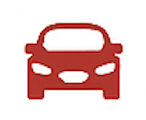How Namibia's Car Culture Reflects Its Landscape, Economy, and Identity
The Role of Vehicles in Namibia's Daily Life and Geography
Namibia's vast and varied landscape, with long stretches of unpaved roads, deserts, and remote rural communities, has shaped a unique car culture that emphasizes durability, self-reliance, and practicality. Cars are not merely a means of transportation; they are essential tools for accessing work, healthcare, and markets in regions where public transport is limited or nonexistent. The average Namibian, particularly in rural areas, often depends on a 4x4 or bakkie (pickup truck) to navigate gravel roads and riverbeds.
Due to the country's low population density and large land area, driving long distances is a routine part of life. For many, owning a vehicle is not a luxury but a necessity. In urban centers like Windhoek, vehicles are also symbols of social status and economic mobility, with newer models and luxury cars being more common among the middle and upper class. However, the car culture remains rooted in utility, even in cities, due to the overall infrastructure design.
The Prevalence of Used Cars and Imports from Japan
Namibia has a significant market for used vehicles, many of which are imported from Japan. These right-hand-drive vehicles are compatible with Namibia's driving regulations and are typically more affordable than new cars. The used car market allows a wider segment of the population to access private transportation and has become a key feature of the car culture in Namibia.
Japanese imports are often sold through local dealerships or online platforms, and many Namibians have grown adept at selecting reliable models and navigating import regulations. Brands such as Toyota, Nissan, and Honda are especially popular, valued for their longevity and availability of spare parts. This preference has helped shape maintenance habits and community repair networks across the country.
The accessibility of used vehicles has also enabled small-scale entrepreneurship. Many individuals use their cars for informal taxi services, deliveries, or as mobile vendors. This adaptability highlights how car ownership in Namibia intersects with livelihood and economic resilience.
Off-Road Culture and 4x4 Enthusiasts
Namibia's dramatic natural terrain, including the Namib Desert, Skeleton Coast, and Etosha National Park, makes it one of the most iconic countries in Africa for off-road driving. The 4x4 culture is strong not only among tourists but also among local enthusiasts who participate in off-road clubs and weekend excursions. Events like dune challenges and guided off-road safaris are common among residents who enjoy exploring their country's remote regions.
Driving in Namibia often involves conditions that require a well-maintained 4x4—steep inclines, shifting sand dunes, and riverbeds. As a result, many Namibians are proficient in vehicle maintenance and basic mechanics, especially in areas where professional service centers are unavailable. Knowledge of tire pressure adjustment, fuel management, and vehicle recovery is widespread among drivers who frequent Namibia's off-road routes.
Beyond the practicality, off-roading is also a form of recreation and cultural expression. Customized vehicles with roof tents, winches, and jerry cans are a common sight in Windhoek and other towns, reflecting a blend of functionality and pride in outdoor mobility. These vehicles often symbolize independence, adventure, and a close connection to Namibia's wild spaces.
Taxis and Informal Public Transport Networks
In Namibia's towns and cities, taxis are a primary form of public transport, especially in the capital, Windhoek. The local taxi system operates more like a shared minibus service than private hire. Passengers hail taxis from the roadside, and the driver may pick up multiple passengers traveling in the same direction. There are designated taxi ranks, but much of the service is informal, based on local knowledge and regular routes.
While unregulated in some aspects, the taxi industry provides essential mobility for many Namibians who do not own private vehicles. It also employs thousands of drivers and car owners. Vehicle reliability and fuel efficiency are critical factors, and drivers often rely on Japanese sedans such as the Toyota Corolla or Nissan March due to their lower fuel consumption and ease of repair.
There have been discussions about formalizing and regulating the taxi industry more strictly, especially to improve safety and standards. However, the current model remains a flexible, community-rooted solution to the challenges of public transport in a country where infrastructure development varies widely by region.
Classic Cars, Car Shows, and Enthusiast Communities
Though Namibia's car culture is largely utilitarian, there is also a niche community of classic car collectors and restoration hobbyists. Events like the annual Windhoek Motor Show attract exhibitors and visitors who appreciate vintage models, performance cars, and unique modifications. Enthusiast groups maintain and showcase vehicles ranging from old Mercedes-Benz sedans to classic Land Rovers and VW Beetles, all of which have a storied presence in the country.
These shows and gatherings serve both as entertainment and education, where mechanics, students, and curious residents can learn more about car history, engineering, and detailing. The car enthusiast scene remains small but passionate, often intersecting with tourism and historical preservation.
Economic and Environmental Challenges Facing Car Ownership
While car ownership is widespread and essential for many, the economic burden of purchasing and maintaining a vehicle is significant. Import duties, fuel costs, and spare parts can place heavy financial pressure on households. Fluctuations in the Namibian dollar's exchange rate, particularly against the South African rand (to which it is pegged), also impact vehicle affordability.
Environmental concerns are becoming more prominent in public discourse, especially with the effects of climate change in Southern Africa. Namibia's transport sector contributes to emissions, and urban air quality issues have led some municipalities to consider long-term shifts toward cleaner transport. However, the implementation of electric vehicles remains limited due to infrastructure constraints and the high initial costs associated with EV imports.
